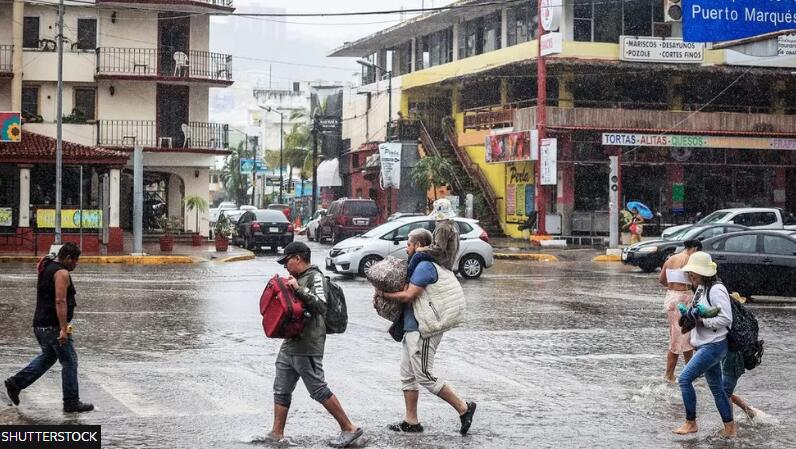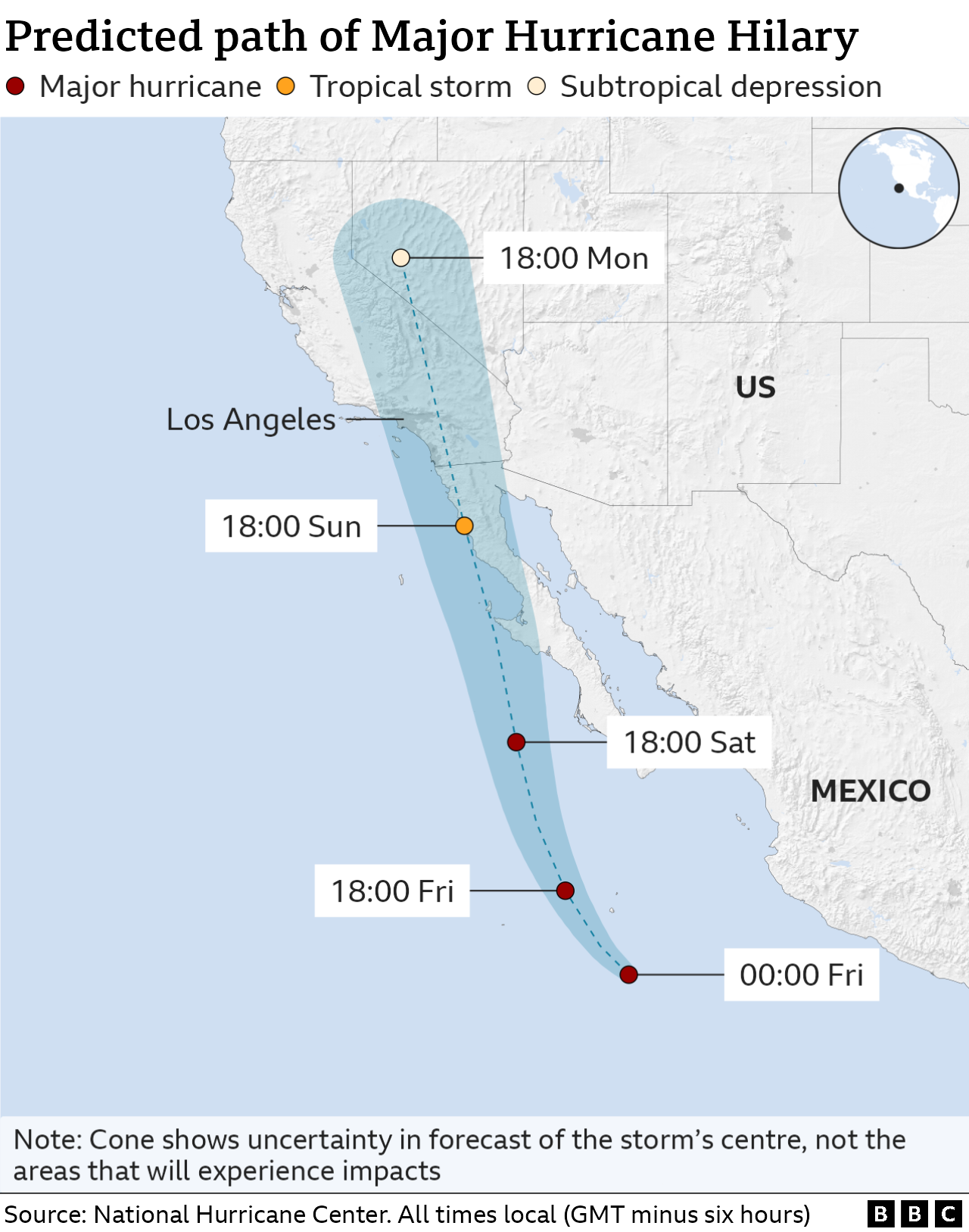
Hurricane Hilary sparks rare storm watch for California
A hurricane packing 130mph (215km/h) winds is churning towards Mexico and the south-western US.
The Category 4 storm, named Hilary, is predicted to first make landfall in Baja California, a Mexican state, on Saturday morning.
Forecasters say it will then lose wind speed and become a tropical storm, tracking north-west towards southern California, Nevada, Arizona and Utah.
It would be the first tropical storm to hit California in over 80 years.
The Federal Emergency Management Agency (Fema) has “pre-positioned personnel and supplies in the region, and they’re ready to respond as needed,” President Joe Biden said Friday.
“I urge everyone in the path of the storm to take precautions and listen to the guidance from state and local officials.”
The National Weather Service (NWS) said the potential for heavy rain, ranging from 3-6in (7-15cm) in some areas, and up to 10in in others, could lead to “significant and rare” impacts for parts of southern California and southern Nevada.
In San Diego, the NWS has issued a warning for the “high potential” of flash flooding.
Nearly 26 million people in the south-western US were under flood watch.

As of Friday afternoon, the hurricane had lost a little steam and its centre was located roughly 325 miles south-west of Mexico’s southern edge.
Hilary is expected to weaken to a tropical storm by late Sunday before it reaches southern California, the NWS said.
Heavy rainfall until next Wednesday could bring catastrophic flooding to parts of the south-western US.
Hurricanes and tropical storms are somewhat common in Mexico.
But it is “exceedingly rare” for a tropical storm to come off the ocean and make landfall in California, Stefanie Sullivan, a forecaster with the National Weather Service in San Diego, told the New York Times.
The last time a tropical storm made landfall in southern California was in Long Beach in 1939.

Experts say the severe and abnormal weather events plaguing the US – and several areas across the globe – are being influenced by human-caused climate change.
In the wake of the hottest month on record, July 2023, according to Nasa, the deadliest wildfire in modern US history spread across Hawaii on 8 August, killing at least 111 people.
The damage was escalated by hurricane winds passing through the area.
Comments (0)